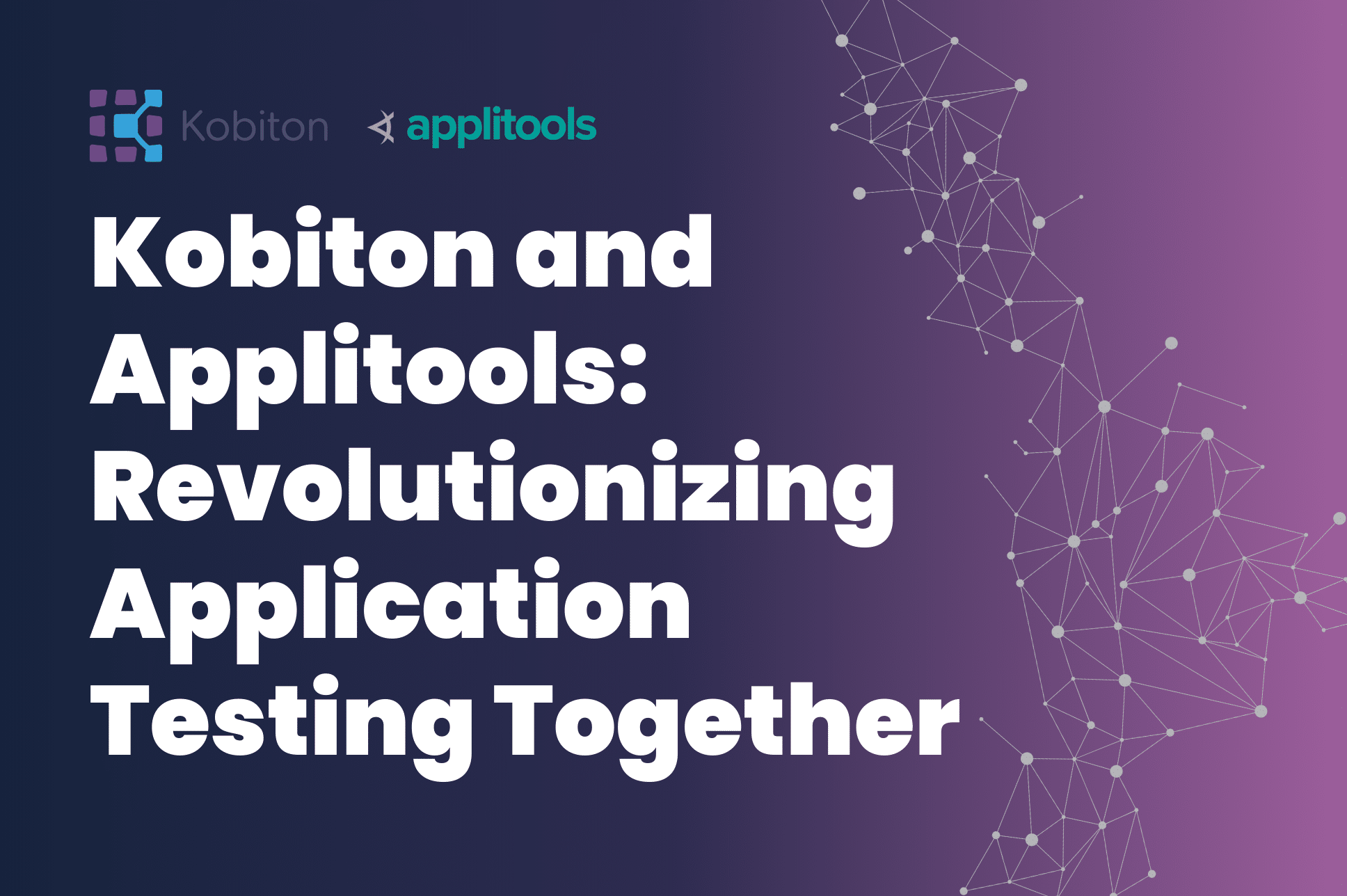
Kobiton and Applitools: Revolutionizing Application Testing Together

Cara Suarez
At a recent Mobile Testing & Experience Summit hosted by Kobiton, Shane Evans, co-founder and CPO of GameDriver, Inc. led an engaging breakout session on mobile game testing. Shane stands at the forefront of merging technology and gaming. With over 20 years of test automation expertise, Shane’s vision propels GameDriver to enhance app development in the $180 billion gaming sector and beyond, utilizing AR and VR technologies for consistent, high-quality user experiences.
Evans began by telling us about the importance of getting people “talking about their thinking, about mobile testing and gaming. Not specifically mobile, but gaming in general.”
With this encouragement, he was able to also touch on his company’s partnership with Kobiton. As Evans put it, the relationship “is really kind of a first,” he said, and that “we’re really excited about working together.”
Let’s find out why.
To begin, I asked Evans about why the market for gaming is so significant today.
“Just a few quick facts about the mobile gaming market,” he said. “Many people don’t realize, but gaming as a whole is the largest entertainment segment in the world. It’s larger than digital music, it’s larger than movies. It’s larger than all the professional sports combined. It’s an incredibly large market that’s pandemic proof.”
“Gaming as a whole is the largest entertainment segment in the world. It’s larger than digital music, it’s larger than movies. It’s larger than all the professional sports combined. It’s an incredibly large market that’s pandemic proof.”
Shane Evans, co-founder and CPO of GameDriver, Inc.,
He added: “The largest part of that market has become mobile gaming. It represents fifty percent of the hundred and ninety billion dollar gaming market overall.”
Buckle in, because that’s not all; Evans added that it’s also the fastest-growing segment of that market.
Besides a medium for entertainment, there are other ways that mobile gaming has made waves in the world of tech, he explained. For example, mobile gaming is also the most inclusive of all entertainment mediums, with “representation from all age groups, genders, backgrounds, you name it,” Evans told us.
“So it’s quite important that you stand out in this space,” he said.
Key to understanding the gamer mindset is a realization that “simulated entertainment value players will always choose the game with least amount of issues.” — meaning the least amount of bugs.
What does that mean?
“Gamers are very, very picky,” Evans explained. They’ll be drawn toward products with the least amount of bugs.
It’s an important concept, as games become more and more convoluted. “We’ve got more complex game mechanics,” he said. “Diverse gameplay elements require multifaceted user testing, such as multiplayer titles. No longer are we testing or playing a game by yourself on our mobile device,” Evans said. “It’s become a much more social and connected experience.”
Worth noting, Evans said, this tends to contribute to more frequent updates. Fortunately, users are familiar with that need.
“Gamers are expecting regular content updates,” he said. “But on mobile, it’s actually much more seasonal, which can mean, you know, two to three months in some cases. But on mobile devices, the games tend to be played much more frequently.
“So testing for bugs and compatibility for every single release, every update, is super critical in this space. We’re also dealing with multiple monetization models.”
“Testing for bugs and compatibility for every single release, every update, is super critical in this space. We’re also dealing with multiple monetization models.”
Shane Evans, co-founder and CPO of GameDriver, Inc.,
Components of games today include in-app purchases, he reminded us, and virtual currencies. “In most cases, these are actually not standalone,” he said. “So you’ve got multiple sort of mix modes of monetization to test when you’re creating these games, and it’s critical that these work.”
He continued: “One of our sort of core capabilities is being able to interact with the game as if you are a real user. “Our goal is to test as if the user was testing, but in a more automated consistent manner. And that includes mobile or multiplayer testing.
“So we’re not just now recording and replaying every touch and tap on a device, which we can also do, we’re able to set up a scene… run a test, move to the next scene, run another test. So a very consistent approach to doing that,” Evans pointed out.
As he shared at the beginning of our discussion, it’s important to think about our testing procedures. “We’re not talking about application development. We’re talking about steps.”
Game developers can’t often rely on the advice of colleagues at competing companies — this market, he told us, is an extremely secretive one. “A joke with some of our customers is that it’s easier for us to get into a department of defense contractor relationship, than it is to get into a gaming studio in some cases,” he told us.
That’s why Evans’ relationship with Kobiton is so valuable. Not only does Kobiton provide the technology solutions to allow him and his team an ability to efficiently process testing directives, but it also shares specialized teams for the deployment of priority and time-sensitive releases.
To realize those objectives, automated testing tools provided by Kobiton make all the difference. However, Evans pointed out, there is also a time and place for manual testing.
“We tell our customers all the time: Our goal is not to eliminate manual testing. For gaming in particular, you need manual tests, you need people to play it and say, is this fun? Is this the experience that we were looking to achieve? We believe that automation really helps to unlock that,” Evans says.
“(Automated testing simply) helps to free up your resources from doing the very mundane, repetitive, things that aren’t adding a lot of value, so that they can test those things that are more valuable.”
There’s a reason why so much attention is cast upon the mobile game testing industry, and the interest it garners comes from curious minds outside that industry as well: It’s because gaming, we know, is a huge market.
“It’s recession proof,” Evans reminded us. “And (it) really continues to exceed its expectations year over year.”
Shane Evans, co-founder and CPO of GameDriver, Inc.,
To enjoy the full program, watch MTES on demand.